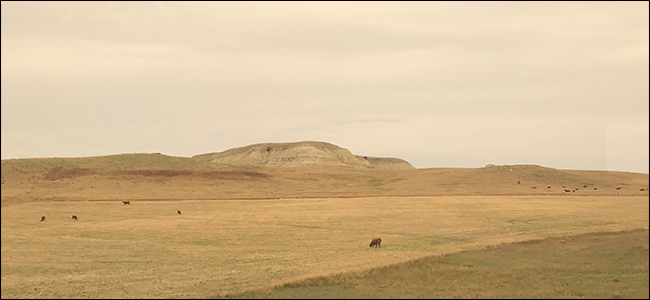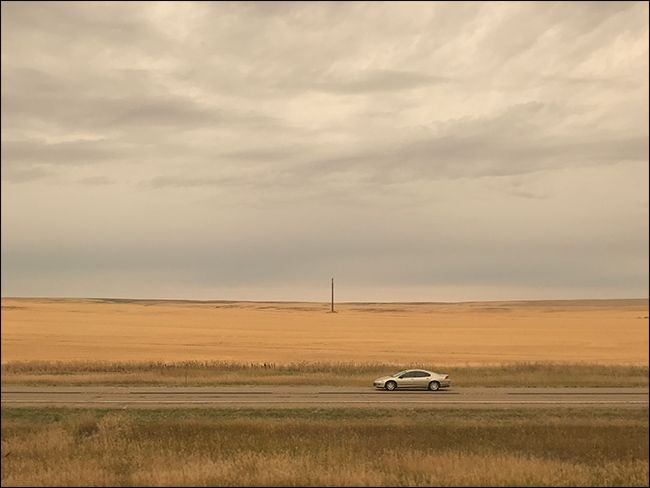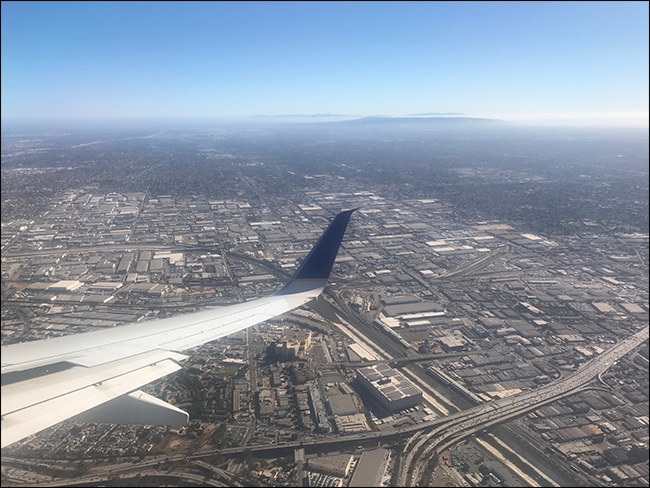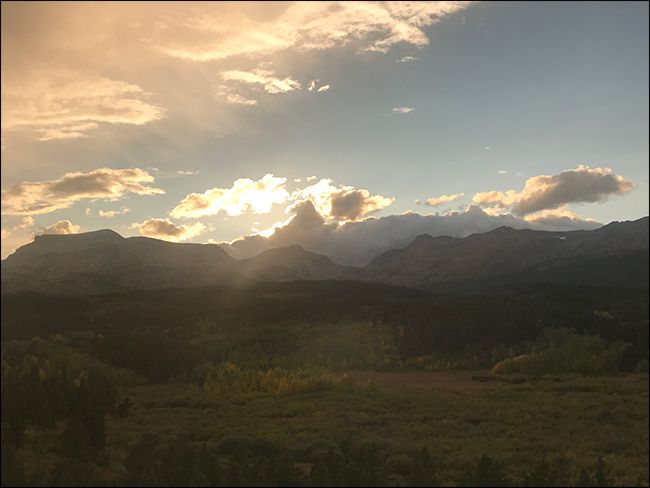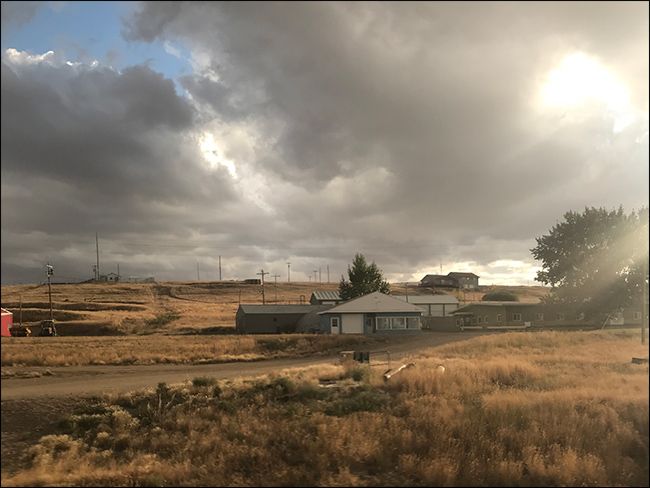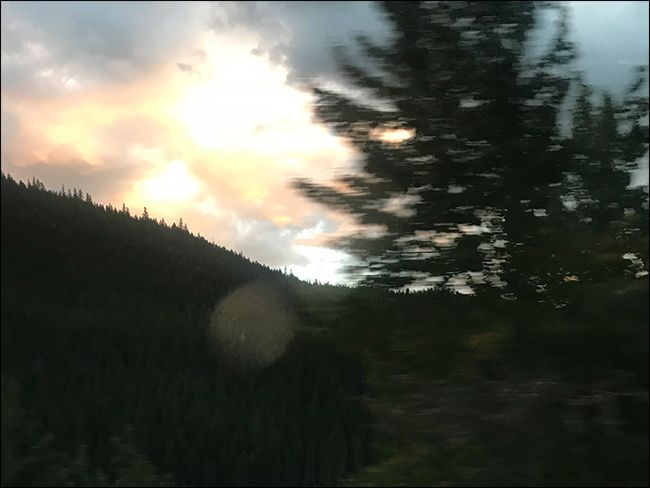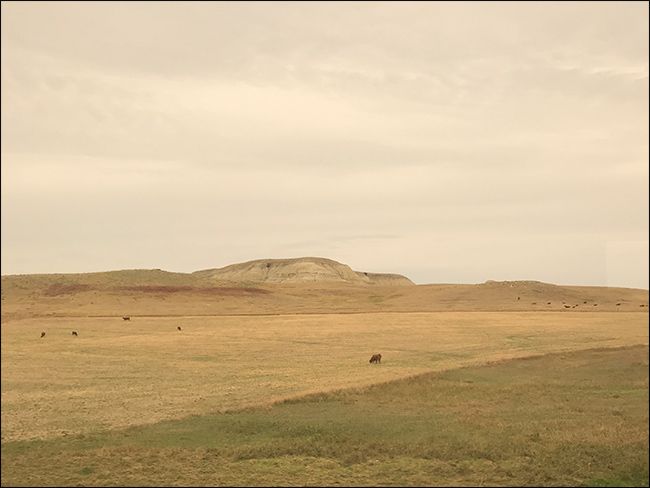Quick Links
Windows might seem clear when you look through them, but when you take a photo, you’ll notice that the glass has quite a significant effect on how things look. There’ll be reflections, flare, and all sorts of weird stuff going on that your brain mostly ignores—but your camera captures. Let’s look at how to take better photos out of windows.
Shoot From Inside Out
Just like it’s much easier to look out a window from inside than outside, it’s much easier to take photos from inside. You’re never going to get a good photo shooting from outside in unless you’re deliberately including the reflections in the image. This is a bit of a street photography trope and doing it well isn’t really what we’re looking at today. (It can also be a bit creepy).
Instead, we want to minimize reflections when shooting from inside the house/car/plane/train/phonebox out rather than the other way around.
If you’re in a public location, you probably don’t have a lot of control over your environment, so this section is “nice if you can do it, don’t worry if you can’t.”
Start by turning off any lights inside. The darker the interior is, the fewer reflections you’ll have to deal with. In particular, try to turn off any lights that are shining directly on the window; you’ll be able to see their reflections if you look carefully. If you can’t turn off the lights, you can also use your body or a bit of cloth to block the camera off from the rest of the room.
Get a cloth and some warm soapy water and wash the window, outside and in. Anything that’s stuck to the window will also affect the image quality. Again though, you’re unlikely to have this option unless you’re shooting wildlife from your own home. Even just a quick wipe with the sleeve of your sweater can go a long way though.
Get as Close as Possible
The easiest way to shoot through a window is to have the lens as close as possible to the glass: touching it is ideal. The further back you are, the more the window is going to interfere with things like autofocus and the more likely you are to see any small bits of dirt or reflection. If you’re using your smartphone, literally press it right to the window.
You can see the difference in the two photos below. The first one I took on a train that’s windows had a single pane of glass with my phone pressed right up against it.
Pretty good? Now, look at this second shot. This was taken on a plane where there are two panes of glass about 1/2” apart. My phone is pressed right up against the first pane, but even that small gap is enough that the second pane messes with the quality of the image.
Don’t Shoot Into the Sun
If you want to take good photos out a window, the sad fact is you can’t shoot into the sun. Camera lenses use high-quality glass and special coatings to minimize lens flare and even they still get it. Windows light up like a Christmas tree when the sun hits them.
I, of course, constantly ignore my own advice and you can see in the next two photos how, despite my best efforts, there’s pretty ugly lens flare ruining both images.
See?
It’s a shame, because without the window in the way, the light in both these locations was beautiful. Maybe I should have pulled the emergency brake on the train to get the shot!
Take Manual Control
Unless you have an incredible conservatory where you can watch birds come to bath and eat, it’s likely that most of the time you’re trying to take a photo through a window you’re doing it from a moving vehicle. This plays havoc with your poor camera’s autoexposure—and even autofocus—abilities. It’s just not normal for it to be going sideways at high speed.
When your camera’s automatic systems aren’t doing their job it means one thing: you have to take manual control. As always, you don’t need to control every setting. You just need to make sure that your shutter speed is fast enough to freeze all the motion. You can do that using shutter priority mode or by manually setting your aperture and ISO and using aperture priority mode.
If you’re using your smartphone, you’ll probably need to download a third-party camera app—or enable Pro mode on some Samsung phones—to get manual control. You won’t be able to change the aperture but you will be able to set shutter speed and ISO.
For iOS, I love Halide Camera ($5.99). For Android, we recommend Open Camera (free).
When you’re travelling, it’s almost impossible not to try and snap a few shots out the window of whatever vehicle you’re in. Follow these tips, and your images might actually be usable. Almost all the photos are from a train trip I took from Chicago to Portland and I’m really happy with the good ones.

